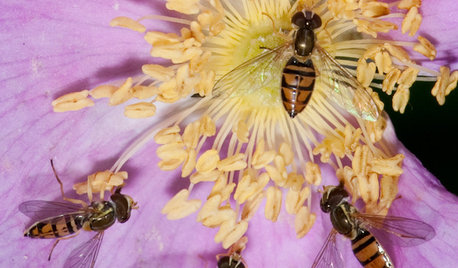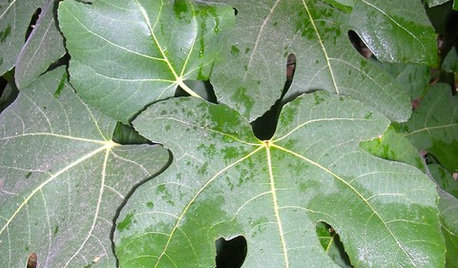Augh! Aphids and spider mites!
greendreamhome
10 years ago
Related Stories

GARDENING GUIDESThis Fly Is One of the Most Beneficial Insects Around
Meet the syrphid fly, a colorful pollinator that also beats chemicals for controlling aphids and other garden pests
Full Story
HOUSEPLANTSIndoor Winter Gardens for Cheerier Days
Bring plants inside for drab-days mood boosting — not to mention cleaner indoor air and protection for your greenery
Full Story
HOUSEPLANTS8 Essentials for Healthy Indoor Plants
Houseplants add so much to our homes — and can thrive when grown in the right conditions. Keep these tips in mind
Full Story
HOUSEPLANTS8 Houseplants You Can't Kill
They're forgiving and let you forget. Houseplants don't get any easier than this
Full Story
HOUSEPLANTSHow to Grow Orchids Indoors
Orchids are the exotic aristocrats of the flower world and can make themselves comfortable in almost any home
Full Story
GARDENING GUIDESTexas Gardener: What to Do in July
Beat the heat with sun-loving blooms, pest control, good lawn care and sun protection. Pick up the pace for planting and planning
Full Story
SUMMER FRUITS AND VEGETABLESHow to Grow Eggplant at Home
Plant glossy purple eggplant as much for its beauty in the garden as its flavor on the plate
Full Story0

GARDENING GUIDESGreat Design Plant: Common Fig
A full form and delicious fruits make this Middle Eastern tree a favorite in gardens around the world
Full Story
SUMMER FRUITS AND VEGETABLESSummer Crops: How to Grow Beans
Grow your own beans for amazing variety and healthy, convenient produce all summer
Full Story
GARDENING GUIDESHerb Garden Essentials: Grow Your Own Delicious Mint
Pull out a pot for this one. Mint's spreading habit and hard-to-kill nature can be a blessing — if you're properly prepared
Full StoryMore Discussions











strawchicago z5
greendreamhomeOriginal Author
Related Professionals
Arlington Landscape Architects & Landscape Designers · Hyattsville Landscape Architects & Landscape Designers · Parole Landscape Architects & Landscape Designers · Zion Landscape Architects & Landscape Designers · Aberdeen Landscape Contractors · Addison Landscape Contractors · Broomfield Landscape Contractors · Duarte Landscape Contractors · Glendale Heights Landscape Contractors · Lees Summit Landscape Contractors · Lynn Landscape Contractors · Medford Landscape Contractors · Riverview Landscape Contractors · Smyrna Landscape Contractors · Waldorf Landscape Contractorsstrawchicago z5
Lera-Valera